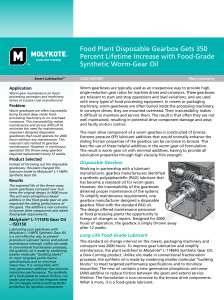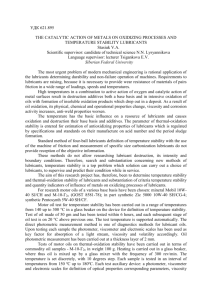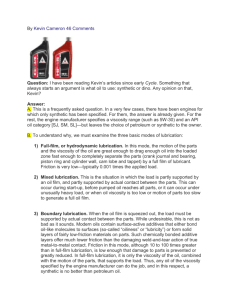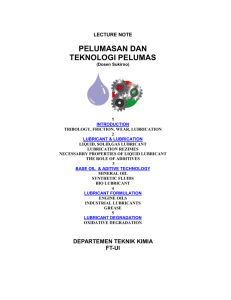Figure 1. Lubricating oils consist of a combination
advertisement
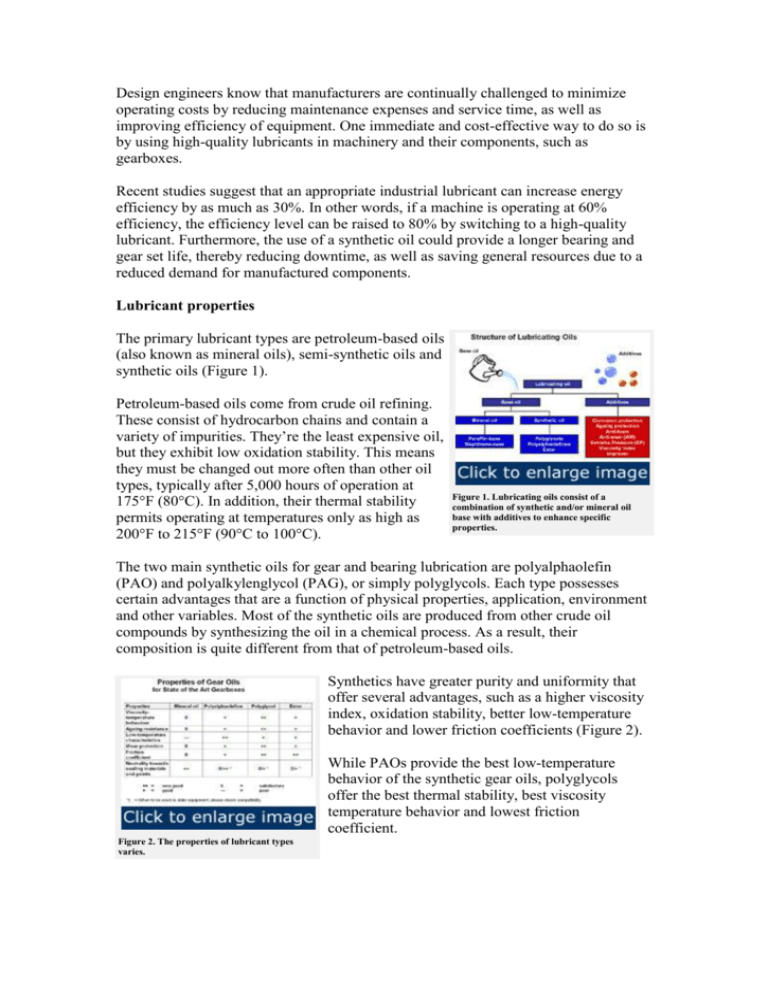
Design engineers know that manufacturers are continually challenged to minimize operating costs by reducing maintenance expenses and service time, as well as improving efficiency of equipment. One immediate and cost-effective way to do so is by using high-quality lubricants in machinery and their components, such as gearboxes. Recent studies suggest that an appropriate industrial lubricant can increase energy efficiency by as much as 30%. In other words, if a machine is operating at 60% efficiency, the efficiency level can be raised to 80% by switching to a high-quality lubricant. Furthermore, the use of a synthetic oil could provide a longer bearing and gear set life, thereby reducing downtime, as well as saving general resources due to a reduced demand for manufactured components. Lubricant properties The primary lubricant types are petroleum-based oils (also known as mineral oils), semi-synthetic oils and synthetic oils (Figure 1). Petroleum-based oils come from crude oil refining. These consist of hydrocarbon chains and contain a variety of impurities. They’re the least expensive oil, but they exhibit low oxidation stability. This means they must be changed out more often than other oil types, typically after 5,000 hours of operation at 175°F (80°C). In addition, their thermal stability permits operating at temperatures only as high as 200°F to 215°F (90°C to 100°C). Figure 1. Lubricating oils consist of a combination of synthetic and/or mineral oil base with additives to enhance specific properties. The two main synthetic oils for gear and bearing lubrication are polyalphaolefin (PAO) and polyalkylenglycol (PAG), or simply polyglycols. Each type possesses certain advantages that are a function of physical properties, application, environment and other variables. Most of the synthetic oils are produced from other crude oil compounds by synthesizing the oil in a chemical process. As a result, their composition is quite different from that of petroleum-based oils. Synthetics have greater purity and uniformity that offer several advantages, such as a higher viscosity index, oxidation stability, better low-temperature behavior and lower friction coefficients (Figure 2). While PAOs provide the best low-temperature behavior of the synthetic gear oils, polyglycols offer the best thermal stability, best viscosity temperature behavior and lowest friction coefficient. Figure 2. The properties of lubricant types varies. Compared to mineral oil at an operating temperature of 175°F (80°C), oil change intervals with PAO could be extended up to three times, and with PAG it is possible to achieve five times the service life. As you can see, how often a manufacturer is required to change gear oil depends on the chemistry of the lubricant being used. The slope of the lines in Figure 3 represents the 10K rule: For every 18°F (10°K or C) you increase the temperature of the lubricant above about 180°F (80°C), you halve its performance life. Gear oil and gearboxes Figure 3. The prolonged service time of synthetic lubricants can reduce equipment downtime and resources. Choosing the right gearbox lubricant provides the benefits of lower wear rates, lower operating temperatures and greater energy efficiency. Years ago, engineers would design a gearbox before deciding how to lubricate it properly. These days, design engineers factor in the oil viscosity because it directly affects load-carrying capacity. Viscosity index is important because it indicates how the oil’s viscosity varies at elevated or high temperatures. The higher the viscosity index, the less the oil viscosity change has to be considered. The pressure viscosity coefficient is defined by how the oil changes viscosity under load. As pressure increases, the viscosity also increases so it can carry the load and, ultimately, lubricate the metal components of a gearbox. Plant professionals need to understand that gear oil affects several design considerations, including reliability. How large a gearbox energy efficiency increase can be achieved by using high-quality oil depends on the gear type. You should specify expectations from every lubricant: reducing friction and wear, protecting against corrosion, dissipating heat and providing an overall sealing effect, for example. Depending on specific plant operating conditions and manufacturing processes, lubricants might perform a variety of wide-ranging functions. There are, however, several additional elements to consider when selecting an appropriate lubricant. These include operating speed (variable or fixed), type of friction (such as sliding or rolling), load and environmental conditions, and industry standards. Depending on the machine, component or application, the plant engineer should look at different fluid properties. Factors to consider include the load, speed, type of gearing, number of stages and the combination of metals in the gearbox. Keep in mind that some materials don’t tolerate certain types of oils. “High-efficiency oils (synthetic oils based on polyglycol and PAOs are generally better suited to industrial applications than mineral oils.” - Hermann Siebert With regard to gear specifications, consider wear, pitting and temperature — these are capacity limits of a functional gearbox. In an ideal world, gearboxes last forever. But there are wear elements, such as teeth, gear components and bearings that aren’t ideal. They’re affected by torque and speed, which finally lead to the fatigue of the lubricated components. Pitting, for example, is one failure mode to be found when the life of the equipment is reached. With the right synthetic oil, it’s possible to prolong the time until pitting occurs by a factor of five compared to what was achieved with mineral oil. This example underlines the potential synthetic oil offers to reduce maintenance costs and increase productivity. Efficiency improvement An effective way to improve energy efficiency is by switching from petroleum-based oils to synthetic oils. So what, exactly, is energy efficiency? Energy efficiency in a gearbox, for example, means producing the highest power output for a given power input. Power loss manifests itself as temperature, i.e., friction in bearings, seals or gear sets. Every engineer should understand the different features of lubricant types and how to apply them. Although a gear set’s efficiency ultimately is limited by the gear type, high-efficiency oils (synthetic oils based on polyglycol and PAOs) provide better efficiency for industrial gear applications than mineral oils. Gears with low sliding percentages, such as spur and bevel gears, will have only a little improvement in efficiency while gears with high sliding percentages, such as worm and hypoid gears, will produce greater improvement, as much as 30%. A worm gear test rig demonstrates the potential for energy savings (Figure 4). The rig runs at roughly 60% efficiency when filled with a petroleum-based oil. When charged with a PAO, efficiency rises to 70%, and it increases to 78% with a PAG. As efficiency increases, the gearbox temperature falls. This temperature differential increases the life of the gear system and, in the end, has a cumulative effect on energy efficiency in a plant that has Figure 4. Under high sliding conditions, hundreds of gearboxes. Synthetics have a proven polyglocol offers higher efficiency and lower track record of reducing energy costs as well as operating temperature than PAO or mineral oil. enhancing and prolonging equipment life. According to some studies, switching from petroleum-based oil to synthetic oil can cut production costs by 2% to 8%. In the manufacturing world, conveyors — machines that routinely use worm drives to move product — are prime candidates for high-efficiency oils. Bottling and brewing companies, which have hundreds of conveyor gearboxes, would clearly benefit from using superior oil that provides high efficiency (Figure 5). You have several options when selecting a lubricant for a gearbox or machine. Those options range from petroleum-based oils to synthetic oils to semiFigure 5. This is the cost-benefit analysis for a bottling line. synthetic oils. As manufacturers look for every advantage to run smoother, smarter and more efficiently, lubricant selection can affect the bottom line. That’s why engineers need to understand the benefits and applications of high-quality lubricants. It’s proven that synthetic lubricants offer higher stability, have a positive effect on wear protection and fatigue of lubricated components, and extend the operating lives of gearboxes and machines. So while the initial cost of synthetic lubricants might be higher, it can be justified by the extended life of the gearbox or machine, which contributes to a more reliable production process. Synthetic lubricants also can improve the energy efficiency of the equipment, which helps to reduce energy consumption. The reduced energy consumption has an immediate effect on the CO2 emission and helps protect our environment. Hermann Siebert is the head of application engineering at Kluber Lubrication Muenchen KG in Munich, Germany. Contact him at hermann.siebert@klueber.com or +49 89 78 76 713. You may also reach Kluber Lubrication's North American headquarters at info@us.kluber.com or at (800) 447-2238.


